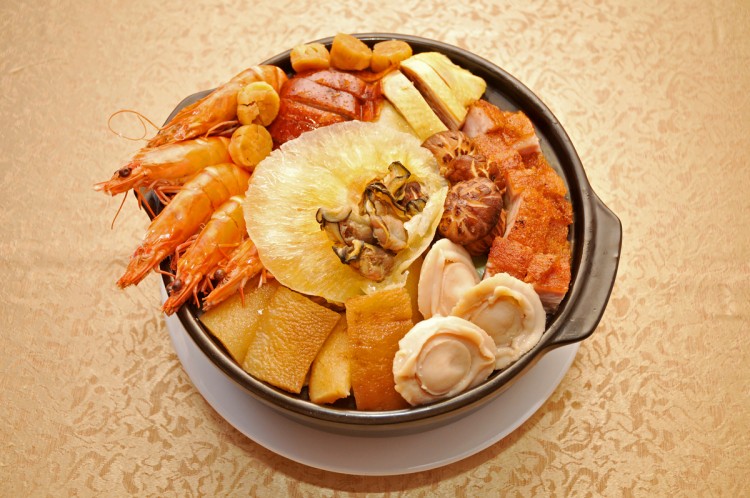Hakka in Taiwan
In Taiwan, Hakka stew is a popular tasty dish. This dish arose from the combination of various delicious ingredients like pork meat (with all its fat), squid jerky, dried bean curd, and celery. Some typical seasonings and spices used are green leeks, chili peppers, soy sauce, and rice wine vinegar.
These ingredients are cooked together to obtain a delicious stew in which the meat should not feel oily, and squid should obtain a good flavor, aroma, and texture. An unforgettable dish, it is excellent when accompanied by white rice.
The most striking features of Hakka cuisine are saltiness, the use of fat, and fragrant ingredients.
The virtuous characteristics of their cuisine express the nature of the Hakka people.
In their effort to maintain a financially stable household through their many migrations, the Hakka became very thrifty, careful not to waste. They are also intelligent and compassionate, being vigilant not to abuse wildlife.
A Hakka tradition is to have four or five generations of family members living in one big house. Therefore, the kitchen and the living rooms of these houses are normally very large.
Another typical characteristic of this ethnic group is that the women of the house take turns in the kitchen. So the sisters, aunts, and sisters-in-law take turns cooking the daily meals.
The Hakka people have the ritual of worshiping the God of Heaven and Earth. Therefore, on the first and 15th day of the lunar calendar, plus during Chinese holidays, it is customary to worship ancestors. Offerings usually consist of delectable dishes with main ingredients like chicken, pork, and squid jerky. Prayers are usually made for family, health, peace, a bumper crop of grain, and fertility of farm animals.
Origin of Hakka Stew
According to legend, on the first day after the ritual of worship, the sister-in-law of a Hakka family put to good use the leftovers from the ceremony. She took the pork meat and made the main course, which she called natural pork in three layers. Then she took the chicken and made a broth, and called it chicken soup with vegetables. Finally, she completed the day’s meals with vegetable stew for the whole family.
The next day it was her husband’s sister’s turn to cook. She took the pork in three layers leftovers and cut it into thinner strips, combined it with dry bean curd, cooked it, and presented it as the main dish, calling it pork with dry bean curd.
She too made a vegetable stew for the whole family.
On the third day, it was the aunt’s turn to cook. While preparing dishes with sautéed vegetables, she found food leftover from the day before and added some squid jerky.
She used plain water to rehydrate the squid, added celery, green onions, and red chilies, and seasoned it with soy sauce and rice wine vinegar, which resulted in a very aromatic dish.
Because the meat had been cooked three times, it no longer felt greasy, and combined with fresh, crisp vegetables it was a perfect mixture of salty and sweet. The resulting dish was well-received by the entire family, who finished it all.
For nearly four millennia since then, Hakka women have copied the food made by that legendary frugal auntie, leaving nothing to waste. Gradually, this dish spread all over Taiwan and became one of the most famous of the region. It’s a very fresh and rich dish, and is specially served with white rice.
But this tasty stew isn’t the only one of its kind among this ancient Chinese ethnicity; there are many varieties of tasty stews, each with their own name. For example, bitter cucumber and salted egg stew, egg and basil stew, fried pig intestines with shredded ginger, pig tripe and bamboo shoot stew, and Hakka-style rice noodles, among others.
If you have the chance to eat at a restaurant that serves up Hakka cuisine, you'll find the special of the house will be a good Hakka stew.
The Epoch Times publishes in 35 countries and in 19 languages. Subscribe to our e-newsletter.








